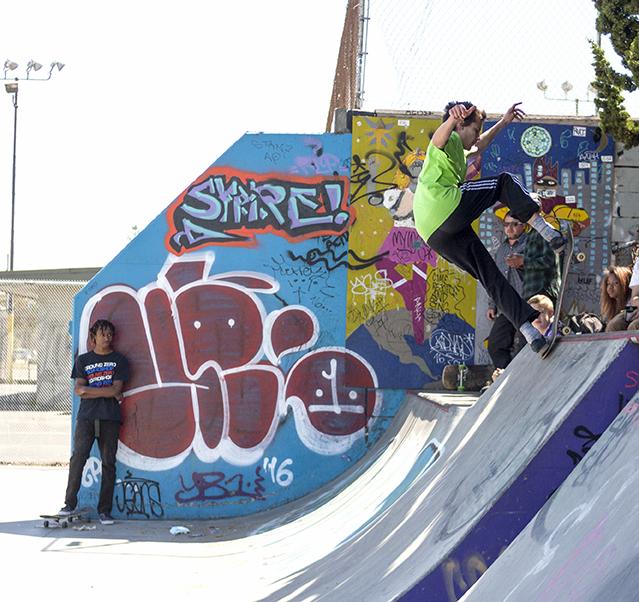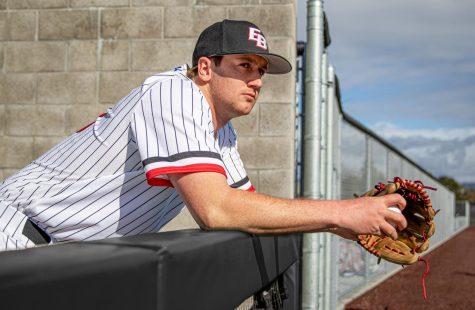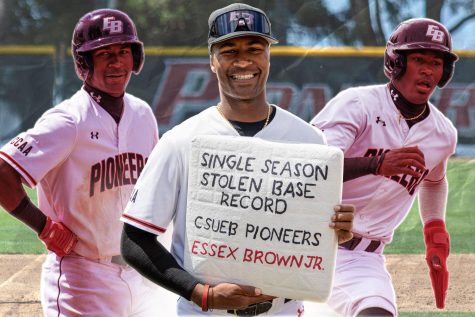Is skateboarding becoming the new wave?
March 1, 2017
To understand the full impact skateboarding has today globally and within the Bay Area community, a group of four Cal State East Bay professors spent the past 2 years investigating skateboarding, one of the fastest growing youth sports in America.
The research team explored the sport from its outsider roots to the widespread influence it has on mainstream youth. The findings of Za’nean Mcclain, associate professor of kinesiology, Becky Beal, professor of kinesiology, Missy Wright, assistant professor of kinesiology, and Matthew Atencio, associate professor of kinesiology, have been compiled into a new book, “Moving Boarders: Skateboarding and the Changing Landscape of Urban Youth.” The book is currently being revised and the final version will be submitted on June 1 to get approved by the editors and further published.
During the research process, the team developed a case study to determine how skateboarding has impacted local communities. Each member of the team went to different skateparks within the Bay Area to understand the shift of skateboarding and how it has become more mainstream.
“The Bay Area is very important because it has a real strong history of skateboarding,” researcher Mathew Attencio told the Pioneer. “You have things like the Embarcadero down in San Francisco and we’ve have had the X Games here a long time ago.” In the year 2000, the X Games were held in San Francisco right next to the shadow of the Bay Bridge. It was held there for two years until moving to Kuala Lumper, Malaysia in 2002. Despite the move, the X Games have since then has left much of an impact on the surrounding community.
“We interviewed people, we observed people, we spoke to parents, we spoke to children, we spoke to community leaders and we spoke to policy makers,” Attencio said while explaining what it took to develop a substantial case study.
From conducting so many interviews, the professors have noticed that over the years, more youth have started to pick skateboarding as their main sport of interest, instead of choosing traditional team sports like football, basketball, baseball and soccer.
“What we are finding is that parents are bringing their kids to the skate park just like they are bringing them to the soccer field,” Wright said as she further elaborated on how parents are investing more of their time into their kids doing skateboarding rather than athletic sports.
Why is this happening? Data gathered in the study showed a few potential reasons. Kids are not getting as much play time as they would like in certain team sports, and unfair coaches who don’t appreciate their value. This could be overwhelming for a kid further helping them make the choice to transition over to skateboarding. In becoming a skater, you have more control over your own actions with no one over your back telling you what to do.
In the midst of conducting this research, the professors were intrigued by how big of an influence skateboarding has on various cultures as well as the public sector. According to Attencio, entrepreneurs, corporations and business are all investing in skateboarding because they think that it is something really good for the community. Skateboarding has become more organized and systematic through big events and skateboarding competitions that have added to its overall appeal. It is becoming a bigger industry and will be acknowledged in the 2020 Summer Olympics as a new sport. It was voted on and approved by the International Olympic Committee on Aug. 6, 2016.
Skateboarding has definitely come a long way from its punk rock roots and has broadened its clientele through skateparks, making it a community supported activity. Skateboarding is beginning to reach new heights within the mainstream world all while providing a way for families to positively interact with one another within a creative learning environment.

















